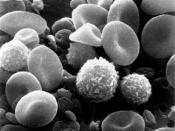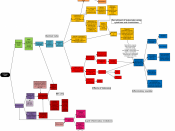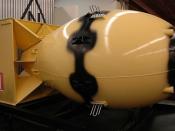Health is a state of physical and psychological well-being. Health is compromised by disease. Disease is any condition which causes deviation from the normal conditions you expect to see during an animal's life. Disease is caused by micro organisms called pathogens; these include viruses, bacteria and protozoa.
VIRUSES
Size: between 30 and 300 nm
Viruses are a protein coat around a DNA or RNA strand.
They are not living cells as they have no metabolism of their own.
They are all parasites which reproduce within host cells and kill them.
Methods of infection include:
*By water
*By droplet (sneezing)
*By vector (another animal which carries the disease without developing it itself, eg. Mosquitoes, fleas)
Method of Infection (virus)
1) Virus injects DNA (genes) into bacterium.
2) Virus genes order assembly of hundreds of new viruses- killing bacterium.
3) New viruses freed from dead cell to attack further bacteria.
BACTERIA
Size: between 0.1
and 10õm
Cell is unique in not having:
*Nuclear membrane around its single loop chromosome so there is no nucleus.
*Mitochondria (cell membrane has no function)
Reproduction is carried out asexually by binary fission.
Binary fission
1) Starts with single cell
2)'Cross wall' laid down middleof the cell
3)Cell splits in 2 to form new cells
Bacterial Shapes
Coccus Bacillus Vibrio Spirillum
Bacteria can be both helpful and harmful. They are living cells which will multiply very rapidly in the right conditions by cell division. Harmful bacteria attack tissues or release poisons.
Both bacteria and viruses can infect animals in the following ways:
*By air- inhaling minute droplets of infected mucous expelled during coughing and sneezing.
*By water- especially if contaminated by faeces eg. Cholera and dysentery
*By mud- introduced into wounds eg. Tetanus and gangrene
*Sexually- during copulation
*By vectors eg. Mosquitoes- yellow fever
In general viruses...


